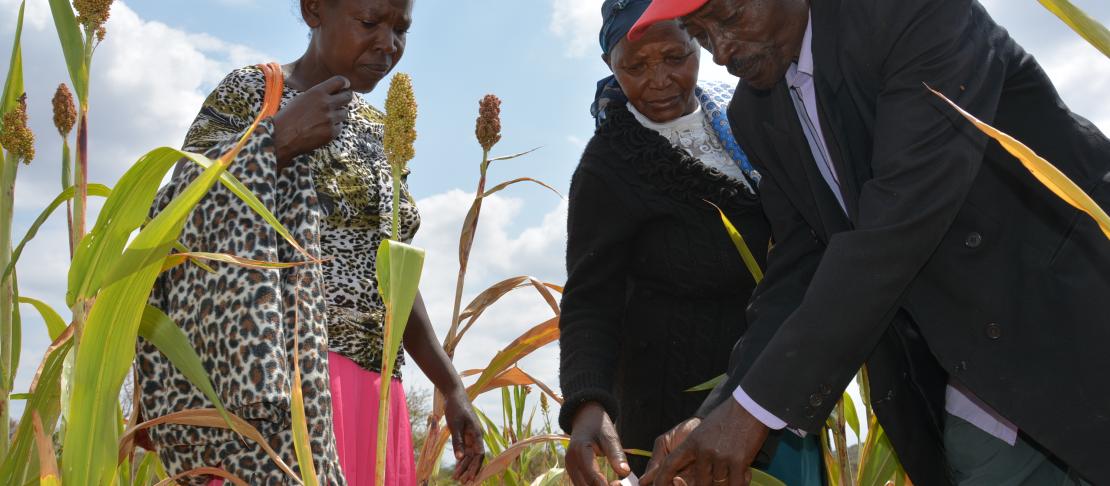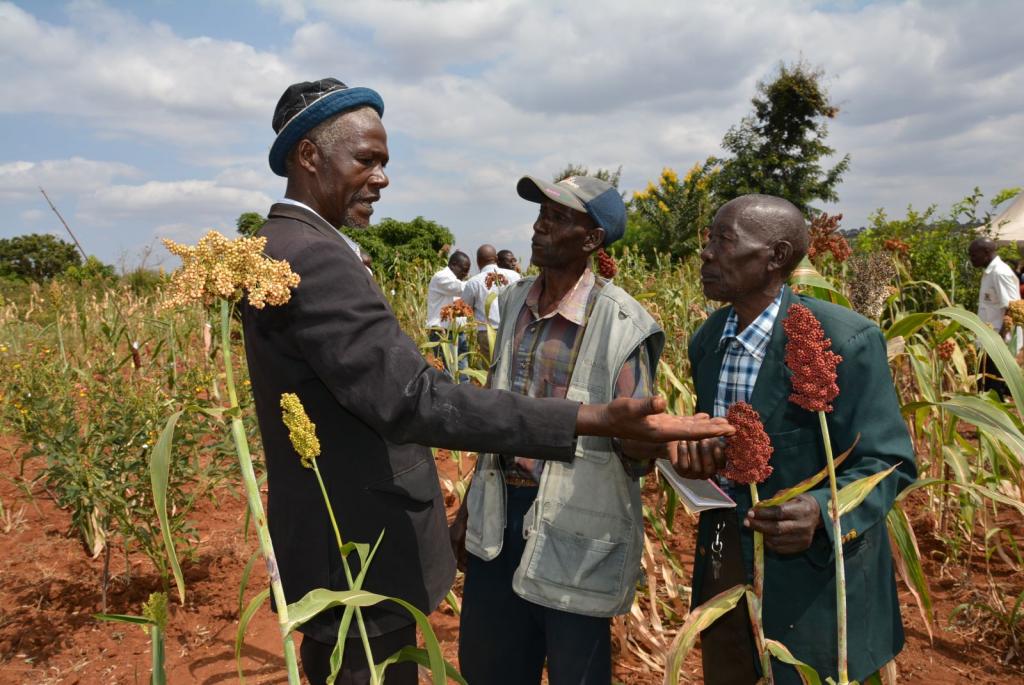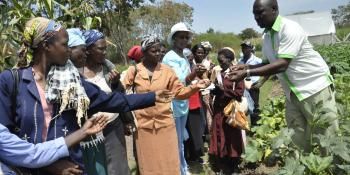Testing sorghum and cowpea varieties to increase farmers’ production margins in East Africa

Cereal and legume crop trials conducted in Kenya and Tanzania provide farmers and researchers an opportunity to select the best varieties for managing climate risk and attaining food security.
Farmers in arid areas of East Africa adversely affected by climate variability have the opportunity to increase their sorghum, cowpea and pigeon pea crop. This follows research by the African Biodiversity Conservation and Innovations Centre (ABCIC) in collaboration with Bioversity International, the National Gene Bank of Kenya, the National Plant Genetic Resources Centre in Tanzania and Sokoine University of Agriculture.
Under the project ‘varietal diversification to manage climate risk in East Africa’, a number of on-station followed by on-farm trials on three crops have been conducted in Makueni and Nyando (Kenya) and Hombolo district (Tanzania). This project, supported by the CGIAR Research Program on Climate Change, Agriculture and Food Security (CCAFS), aims to demonstrate the potential of varietal diversification as a strategy for climate change adaptation in the drier parts of East Africa by assessing levels of diversity of sorghum, cowpea and pigeon peas. Several varieties of sorghum and cow pea were selected from national genebanks in Kenya and Tanzania for testing by a number of farmers.
Watch Jeske van de Gevel speak about the sorghum and cowpea trials
Farmer field days in Makueni
On 16th and 24th of July 2014, farmer field days were conducted in Makueni and Nyando bringing together over 200 farmers, researchers and county government officials to interact and showcase crop variety combinations less vulnerable to climate risk.
“We want farmers to pick out the best variety of sorghum after analyzing the growth patterns, resistance to pests, water uptake and attraction to birds,” said Justus Ngesu, Agricultural extension officer for Makueni County. Other factors considered included economic viability, colour and height of the different sorghum varieties. The farmers also got an opportunity to taste the various varieties once cooked.

Justus ngesu, AN Agricultural extension officeR IN Makueni explaining to farmers the research procesS. photo s.kilungu (CCAFS)
In Makueni County, participants first visited Patrick Muli’s farm, that had trials of 20 sorghum varieties grown under normal farm conditions - without any additional inputs that would alter the growth of the sorghum. The second visit was done at Zacharia Mulili’s farm who grew 20 sorghum and 15 cowpea varieties on different plots of his farm under normal conditions. At these sites, farmers pointed out some of the varieties they would prefer which are already listed in the national genebanks. Their choices were guided by traits such as seed colour, high yields, susceptibility to pests and diseases among others. The final visit was at farmer Peter Nguli’s farm who in addition to the crops, had constructed a water pan and terraces to capture rain water and control soil erosion. Peter’s farm had 20 sorghum and 15 cowpea varieties. The additional land management measures on his farm and a healthy sorghum/cowpea crop impressed many farmers who promised to emulate them.
“Having visited all these farms and seen healthy crops, I believe we have found something to save us from perennial food shortage”, said Patrick Kioko, a farmer from Kathonzweni, Makueni.
Read about Makueni field event in 2013: Intercrop innovations may help build resilience in semi-arid areas
Farmer field days in Nyando
In Nyando, participants first visited Clement Omolo’s farm comprising 20 varieties of sorghum. The second visit was at George Ouma’s farm who showcased 20 sorghum and 15 cowpea varieties. Evaluations were also done taking into account traits such as yield, drought resistance, maturity period, grain size, market availability, as well as pest and disease resistance.
Nyando farmers ranked the crop yield as the greatest factor in determining what variety to adopt. Unlike Makueni, striga weed infestation in sorghum plots was noted to be quite high in Nyando.

Peter Nguli talking to fellow farmers, about the mother trials that were done on his farm. Photo: S.Kilungu (CCAFS)
Research process
A pool of 1000 farmers participated in the trials in both sites. At the start of the season, they were each given four small packets of seeds of different varieties to cultivate. The crop variety was not revealed to the farmers until the field day when discussions were held with researchers and extension workers. Three of the varieties being trialed had largely developed through adaptation to the natural environment and traditional production system in which they had been raised (landraces). A check variety – a crop common in the research area to which farmers can compare the growth to the landraces – was also included.
In Makueni for instance, farmers learned that the commonly grown variety ‘Kateng’u’ required lots of water and was a favourite meal for the birds. These farmers further identified a few varieties (landraces) that gave high yields hence better for the area.
Cow pea intercrops
The cow peas, which have a shorter maturity period as compared to sorghum, were harvested before the field days in most farms hence a thorough evaluation was not possible. However, from the few farms where the crop was still growing, farmers preferred climbing over creeping varieties since they mostly consume the leaves and consider this a sign of early maturity.
The performance of the different trials varied greatly. Overall one sorghum variety (GBK 33644) stood out. Selected from the Kenyan genebank, this variety performed well in all the trials; a tall plant (good for fodder) and has a huge panicle (grain head) and large grain size. It was compared to Gadam; a variety increasingly popular with farmers in Nyando and other regions.
View photos from the makueni farmer field day:
Solomon Kilungu is a Communication Assistant with CCAFS East Africa, Jeske Van De Gevel is an Associate Scientist with Bioversity International and John Yumbya is a Research Officer with the African Biodiversity Conservation and Innovations Centre (ABCIC)



